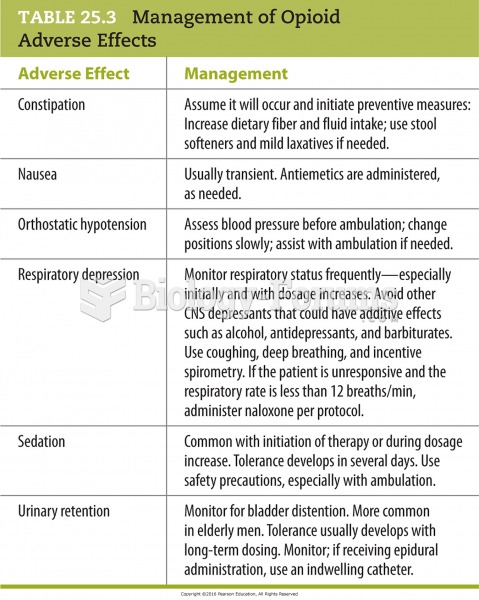Answer to Question 1
3
Rationale 1: Dystonia involves severe muscle spasms, particularly of the back, neck, tongue, and face.
Rationale 2: Tardive dyskinesia is characterized by unusual tongue and face movements such as lip smacking.
Rationale 3: The inability to relax is akathisia.
Rationale 4: Secondary parkinsonism includes tremor, muscle rigidity, stooped posture, and a shuffling gait.
Global Rationale: The inability to relax is akathisia. Dystonia involves severe muscle spasms, particularly of the back, neck, tongue, and face. Tardive dyskinesia is characterized by unusual tongue and face movements such as lip smacking. Secondary parkinsonism includes tremor, muscle rigidity, stooped posture, and a shuffling gait.
Answer to Question 2
4
Rationale 1: Depression, irritability, fatigue, and nausea are not side effects of antidysrhythmic medications.
Rationale 2: Anorexia, insomnia, confusion, and 2+ pitting peripheral edema are not side effects of antidysrhythmic medications.
Rationale 3: Low-grade fever, diaphoresis, weakness, and dry mucous membranes are not side effects of antidysrhythmic medications.
Rationale 4: Side effects of antidysrhythmic medications include palpitations, chest pain, weakness, and fatigue.
Global Rationale: Side effects of antidysrhythmic medications include palpitations, chest pain, weakness, and fatigue. Low-grade fever, diaphoresis, weakness, and dry mucous membranes are not side effects of antidysrhythmic medications. Anorexia, insomnia, confusion, and 2+ pitting peripheral edema are not side effects of antidysrhythmic medications. Depression, irritability, fatigue, and nausea are not side effects of antidysrhythmic medications.







